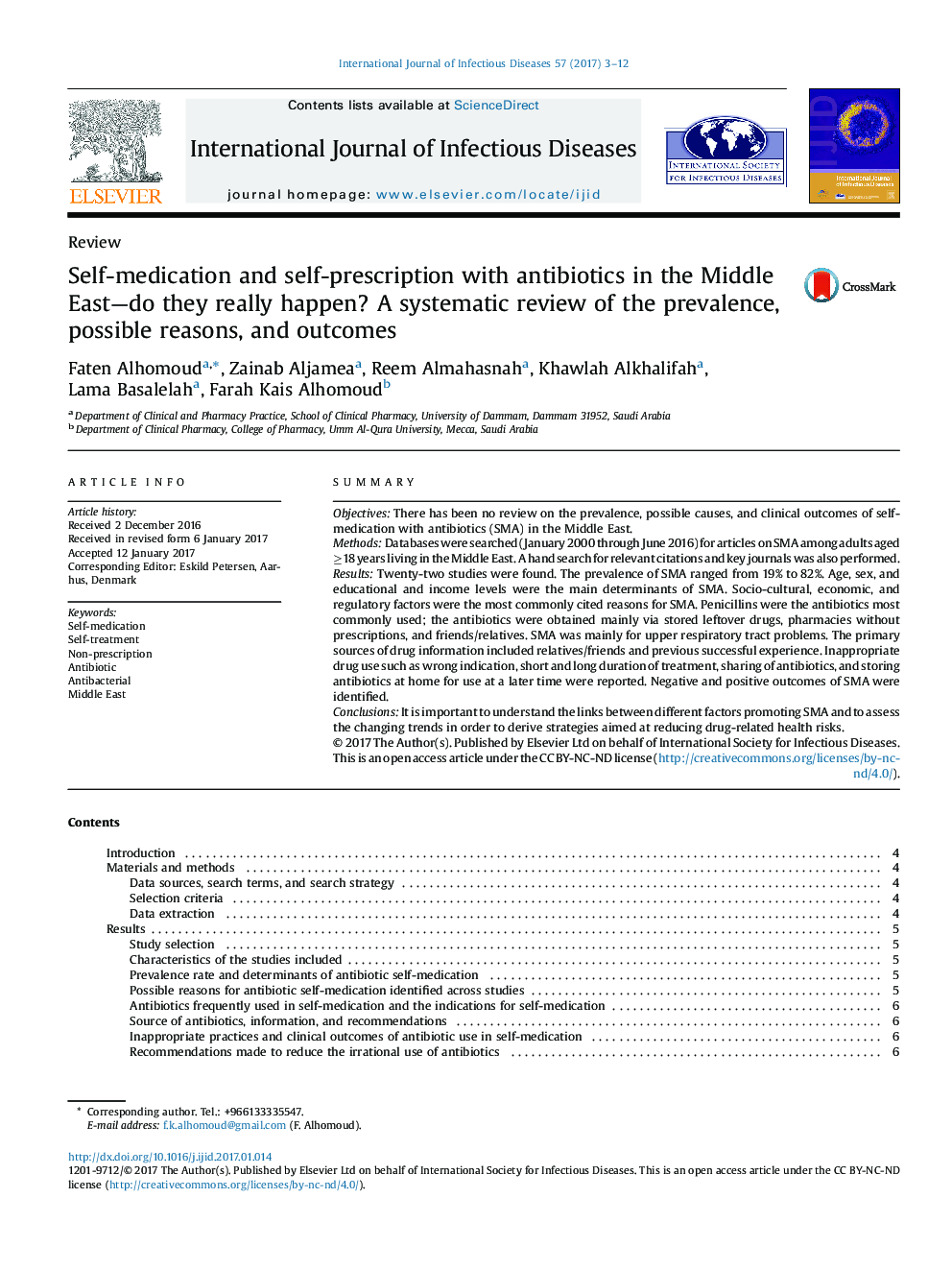| Article ID | Journal | Published Year | Pages | File Type |
|---|---|---|---|---|
| 5667305 | International Journal of Infectious Diseases | 2017 | 10 Pages |
â¢The prevalence of SMA is high in the countries of the Middle East and is frequently associated with inappropriate drug use.â¢If no action is taken to prevent antibiotic misuse, this may lead to the development of resistance and result in wasted resources.â¢Strong regulatory enforcement and community awareness campaigns may be required to limit self-medication with antibiotics.
SummaryObjectivesThere has been no review on the prevalence, possible causes, and clinical outcomes of self-medication with antibiotics (SMA) in the Middle East.MethodsDatabases were searched (January 2000 through June 2016) for articles on SMA among adults aged â¥18 years living in the Middle East. A hand search for relevant citations and key journals was also performed.ResultsTwenty-two studies were found. The prevalence of SMA ranged from 19% to 82%. Age, sex, and educational and income levels were the main determinants of SMA. Socio-cultural, economic, and regulatory factors were the most commonly cited reasons for SMA. Penicillins were the antibiotics most commonly used; the antibiotics were obtained mainly via stored leftover drugs, pharmacies without prescriptions, and friends/relatives. SMA was mainly for upper respiratory tract problems. The primary sources of drug information included relatives/friends and previous successful experience. Inappropriate drug use such as wrong indication, short and long duration of treatment, sharing of antibiotics, and storing antibiotics at home for use at a later time were reported. Negative and positive outcomes of SMA were identified.ConclusionsIt is important to understand the links between different factors promoting SMA and to assess the changing trends in order to derive strategies aimed at reducing drug-related health risks.
